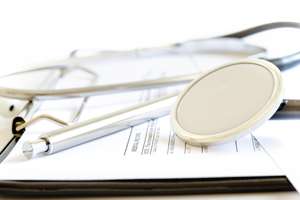Self-reported health information predicts high-need Medicaid patients

Just three types of simple self-reported health measures can predict which Medicaid-eligible adults are more likely to access intensive and costly health services over the next year, a new study in Health Services Research suggests. The findings could provide a new way to save a substantial amount of money while also providing better care for Medicaid's neediest patients.
"These three simple domains worked nearly as well as claims data in classifying someone's risk status over the next year," says study author Lindsey Leininger, Ph.D., assistant professor of health policy and administration at the University of Illinois-Chicago.
Models used to predict the neediest patients have typically been based on previous claims data. However, says Leininger, the implementation of the Affordable Care Act (ACA) has led to an influx of new Medicaid patients joining the system, many who have no prior insurance records to tap for claims data. Additionally, thousands of Medicaid patients weave in and out of the system based on changing eligibility, leaving a spotty and incomplete record of their care, the researchers note.
Leininger and her colleagues examined data from the National Health Interview Survey and the Medical Expenditure Panel Survey, two long-running government-sponsored efforts to gather data on Americans' health and health care. Both datasets contain information on a variety of self-reported measures, including demographic characteristics, health conditions, mental health, and access to health care, as well as responders' use of health care services.
The researchers gathered data for adults at or below 138% of the federal poverty level, reflecting the ACA income eligibility threshold for newly eligible Medicaid populations. After testing several different types of self-reported health measures, the researchers found that combining three of them—health-related quality of life, reports of the prior year's health services utilization, and a simple checklist of health conditions—worked well at predicting future hospitalizations or trips to the emergency room, two of the most costly health care expenditures. Additionally, the measures did especially well at predicting individuals in the top 10 percent of health care expenditures.
Randall Brown, Ph.D., director of health research for Mathematica, a policy research company, notes that self-reported health measures have already proven their worth in other studies, such as a similar one that he and his colleagues did on comparing health services usage by Medicare managed care and fee-for-service patients. The most cost-efficient way to access this data, he says, might be to collect it during the Medicaid application process, something that a few states are already doing.
"When someone is already filling out all that paperwork," Brown says, "why not ask for this information as well?"
















